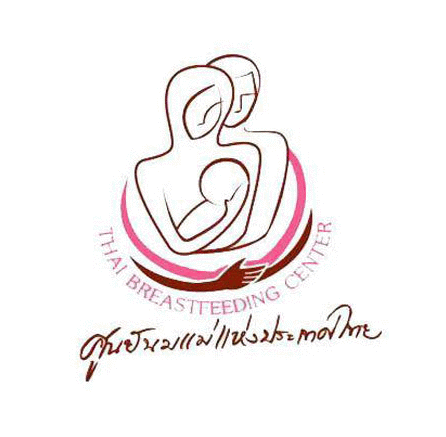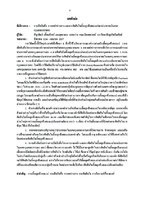| dc.contributor.author | สิญาทิพย์ เพี้ยนภักตร์ | |
| dc.contributor.author | สุดถนอม รอดสว่าง | |
| dc.contributor.other | มหาวิทยาลัยธุรกิจบัณฑิตย์. คณะนิเทศศาสตร์ | |
| dc.date.accessioned | 2017-09-26T16:10:10Z | |
| dc.date.available | 2017-09-26T16:10:10Z | |
| dc.date.issued | 2014 | |
| dc.identifier.uri | https://library.thaibf.com/handle/023548404.11/332 | |
| dc.description.abstract | การวิจัยครั้งนี้มีวัตถุประสงค์เพื่อศึกษา 1. สื่อที่ใช้ในโครงการรณรงค์การส่งเสริมเลี้ยงลูกด้วยนมแม่ 2. การเปิดรับสื่อโครงการรณรงค์ฯ ของประชาชนในเขตกรุงเทพมหานคร 3. การจดจำข่าวสารจากสื่อโครงการรณรงค์ฯ ของประชาชนในเขตกรุงเทพมหานคร 4. การตัดสินใจเลี้ยงลูกด้วยนมแม่ของประชาชนในเขตกรุงเทพมหานคร 5. ความแตกต่างระหว่างลักษณะประชากรศาสตร์กับการตัดสินใจเลี้ยงลูกด้วยนมแม่ของประชาชนในเขตกรุงเทพมหานคร และ 6. ความสัมพันธ์ระหว่างการเปิดรับสื่อโครงการฯ และการตัดสินใจเลี้ยงลูกด้วยนมแม่ของประชาชนในเขตกรุงเทพมหานคร โดยใช้การวิจัยเชิงปริมาณในรูปแบบการวิจัยเชิงสำรวจ (Survey Research) ตัวอย่าง คือ ประชาชนในเขตกรุงเทพมหานคร เพศหญิง จำนวน 901 คน เพศชาย 402 คน และใช้แบบสอบถามเป็นเครื่องมือในการเก็บรวบรวมข้อมูล ผลการวิจัยพบว่า 1. ตัวอย่างส่วนใหญ่เปิดรับข่าวสารทางสื่อออนไลน์และสื่อโทรทัศน์ สื่อออนไลน์ที่ใช้มากที่สุดคือ Facebook ในขณะที่เว็บไซต์ที่นิยมมากที่สุดคือ www.sanook.com สำหรับสื่อโทรทัศน์ ตัวอย่างส่วนใหญ่ชมรายการโทรทัศน์ทางช่อง 3 ในช่วงเวลา 18.01 – 22.00 น. โดยตัวอย่างเพศหญิงนิยมดูละครมากที่สุด ส่วนตัวอย่างเพศชายนิยมดูรายการข่าวมากที่สุด นอกจากสื่อหลักแล้วตัวอย่างยังให้ความสนใจสื่อบริเวณชั้นขายของในห้างสรรพสินค้า และป้ายบนฟุตบาท (Mupi) ในขณะที่แพทย์ พยาบาลเป็นสื่อบุคคลที่ตัวอย่างสามารถหาข้อมูลเกี่ยวกับการเลี้ยงลูกด้วยนมแม่ และเข้าถึงข้อมูลได้สะดวก รวดเร็ว และนำเสนอข้อมูลได้ดีที่สุด ทั้งนี้ ตัวอย่างส่วนใหญ่เคยเห็นสื่อของโครงการฯ อยู่ในระดับปานกลาง มีค่าเฉลี่ย 2.72 2. ตัวอย่างที่เห็นสื่อรณรงค์ฯ สามารถจดจำสารเกี่ยวกับการเลี้ยงลูกด้วยนมแม่ในระดับมากที่สุด นอกจากนั้น ตัวอย่างส่วนใหญ่เห็นว่าสื่อหรือข้อมูลเกี่ยวกับโครงการรณรงค์ฯ ที่เปิดรับมีผลต่อการตัดสินใจเลี้ยงลูกด้วยนมแม่ โดยตัดสินใจเลี้ยงลูกด้วยนมแม่ร้อยละ 96.04 และเชื่อว่าตนเองมีบทบาทสาคัญในการตัดสินใจเลือกนมในการเลี้ยงดูลูก ส่วนใหญ่คาดว่าจะเลี้ยงลูกด้วยนมแม่เพียงอย่างเดียวมากกว่า 6 เดือน สาหรับสื่อรณรงค์ที่มีผลต่อการตัดสินใจมากที่สุด ได้แก่ สื่อโทรทัศน์ 3. การทดสอบสมมติฐานพบว่า ประชาชนในเขตกรุงเทพมหานครที่มีสถานภาพ จำนวนบุตร และระดับการศึกษาแตกต่างกันจะมีการตัดสินใจเลี้ยงลูกด้วยนมแม่แตกต่างกัน ในขณะที่ อายุ อาชีพ และรายได้ที่แตกต่างกันไม่มีผลต่อการตัดสินใจเลี้ยงลูกด้วยนมแม่ 4. ความสัมพันธ์ระหว่างการเปิดรับสื่อโครงการรณรงค์ฯ และการตัดสินใจเลี้ยงลูกด้วยนมแม่ของประชาชนในเขตกรุงเทพมหานคร พบว่า สื่อของโครงการรณรงค์ฯ ไม่ได้เป็นสาเหตุหลักในการตัดสินใจเลี้ยงลูกด้วยนมแม่ เนื่องจากมีปัจจัยอย่างอื่นที่มีผลต่อการตัดสินใจ โดยอันดับ 1 ได้แก่ ต้องการให้ลูกมีสุขภาพที่แข็งแรง อันดับ 2 มั่นใจในประโยชน์ของนมแม่อยู่แล้ว แต่ทว่าตัวอย่างส่วนใหญ่ก็เห็นว่า สื่อหรือข้อมูลเกี่ยวกับโครงการรณรงค์ฯ ที่เปิดรับมีผลให้ตัดสินใจเลี้ยงลูกด้วยนมแม่ อย่างไรก็ตาม หากมีการรณรงค์ให้เลี้ยงลูกด้วยนมแม่อย่างต่อเนื่องอาจก่อให้เกิดการเปลี่ยนแปลงเชิงพฤติกรรมของกลุ่มเป้าหมาย โดยประชาชนทั่วไปหันมาตัดสินใจเลี้ยงลูกด้วยนมแม่เพียงอย่างเดียว | en_US |
| dc.description.abstract | The objectives of research are to understand 1) using media for breastfeeding campaign, 2) media campaign exposure of population in Bangkok, 3) media campaign recognition of the population in Bangkok, 4) breastfeeding decision making of population in Bangkok, 5) the differences between breastfeeding decision making and demographic characteristics of population in Bangkok and 6) the relationship between media campaign exposure and breastfeeding decision making of population in Bangkok by using quantitative survey research methodology and techniques . Data collection has been made through studying questionnaires answered by the accessible target population of 901 females and 402 males who reside in Bangkok. The results are as follows:
1. Online and television media are exposed by majority of the accessible target population. The most used online media is Facebook while the most used website is www.sanook.com. Majority of the accessible target population watches Thai television channel 3 from 18:01-22:00 hrs. The most favorite program for female target population is drama while for male target population is news. Besides the major medias, the accessible target population are also interested in medias putting on rack-shelf in department store and banners displaying on footpath (Mupi). However, doctors and nurses are the most effective personal media because they are able to access to and promote breastfeeding information immediately and directly. However, majority of the accessible target population has ever seen Media for Breastfeeding Campaign at average level with the score of 2.72.
2. The accessible target population, who has ever seen media campaign, is able to remember the key message about breastfeeding in the highest level. In addition, 95.26 percent of the total accessible target populations agree that media or information about the campaign affect to their decision making in breastfeeding their babies and they also believe that they have important role in breastfeeding decision making. Majority of them anticipate to exclusively breastfeeding their babies longer than 6 months. The most influence media for breastfeeding decision making campaigns is television.
3. The hypothesis evaluation found that the differences of social status, number of children and education levels of population in Bangkok affect to breastfeeding decision making. On the other hand ages, careers and income do not have any influence to breastfeeding decision making.
4. In terms of the relation between media exposure about breastfeeding campaign and breastfeeding decision making of the accessible target population in Bangkok, it is found that media campaign does not the main reason in breastfeeding decision making. There are other factors that affect the decision. Firstly, they want a healthy child, secondly, they believe in the benefits of breastfeeding. Whereas the accessible target population agreed that the media or information about the campaign has an affect towards their breastfeeding decision making. However, a long-term and on-going breastfeeding campaign will promote breastfeeding behavior among the target group of the campaign, and encourage them to accept breastfeeding. | en_US |
| dc.description.abstract | Keywords: Breastfeeding, Media exposure, Recognition, Decision, Media campaign analysis | en_US |
| dc.description.sponsorship | คณะนิเทศศาสตร์ มหาวิทยาลัยธุรกิจบัณฑิตย์ | en_US |
| dc.format.extent | 161 หน้า | |
| dc.format.mimetype | application/pdf | en_US |
| dc.language.iso | tha | en |
| dc.publisher | มหาวิทยาลัยธุรกิจบัณฑิตย์ | en_US |
| dc.rights | ผลงานนี้ ลิขสิทธิ์เป็นของเจ้าของผลงาน | |
| dc.subject | การเปิดรับสื่อ | |
| dc.subject | การจดข่าวสาร | |
| dc.subject | การตัดสินใจ | |
| dc.subject | การวิเคราะห์สื่อรณรงค์ | |
| dc.subject | Media exposure | |
| dc.subject | Recognition | |
| dc.subject | Decision | |
| dc.subject | Media campaign analysis | |
| dc.subject.other | TBC::การเลี้ยงลูกด้วยนมแม่ (Breast feeding) | |
| dc.title | การเปิดรับสื่อ การจดจำข่าวสาร และการตัดสินใจเลี้ยงลูกด้วยนมแม่ของประชาชนในเขตกรุงเทพมหานคร | |
| dc.title.alternative | Media exposure, Recognition and Breastfeeding Decision Making of population in Bangkok | en_US |
| dc.type | Text | |
| dc.rights.holder | มหาวิทยาลัยธุรกิจบัณฑิตย์ | |
| mods.genre | รายงานวิจัย | |
| mods.location.physicalLocation | มูลนิธิศูนย์นมแม่แห่งประเทศไทย | |


